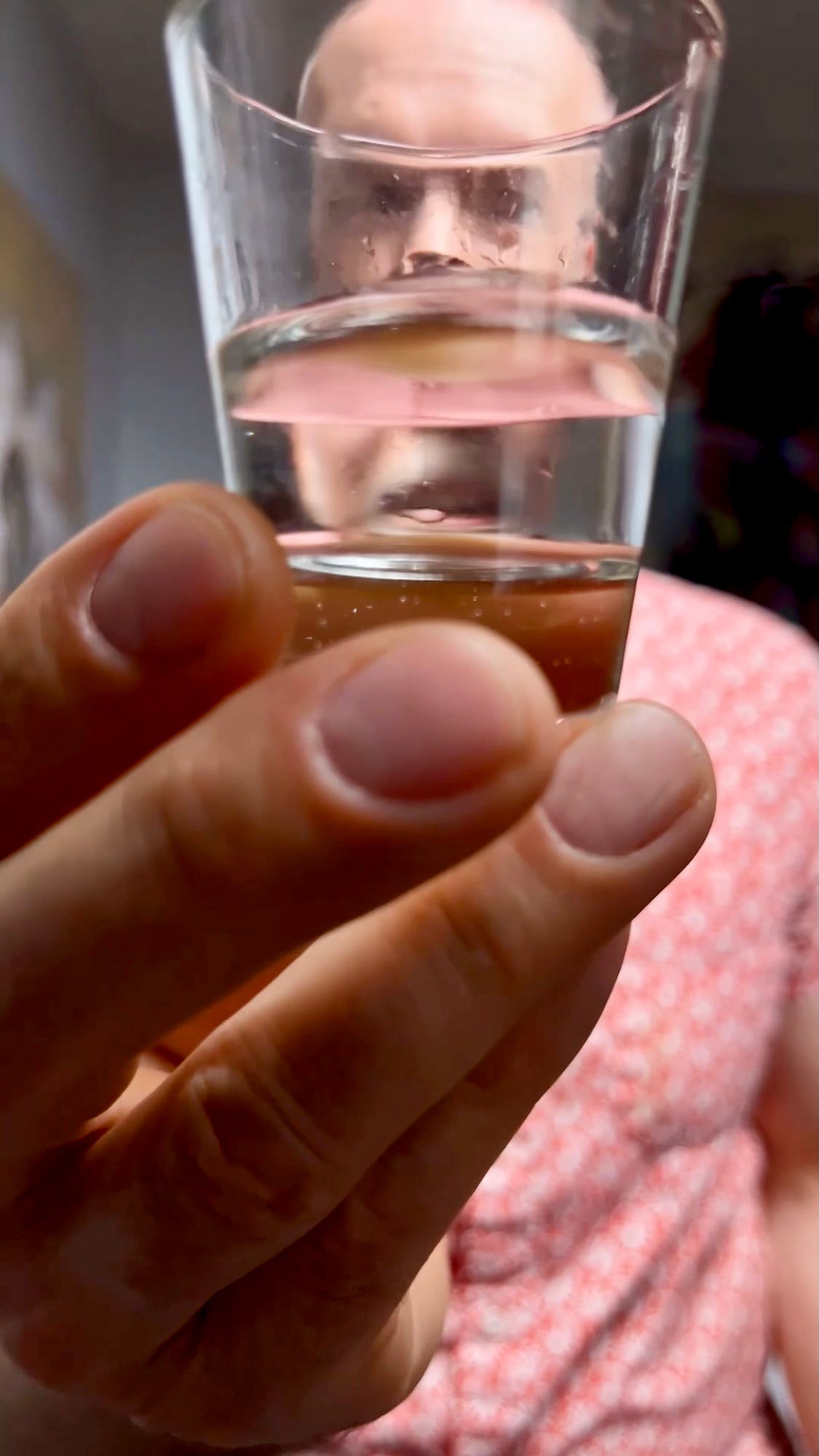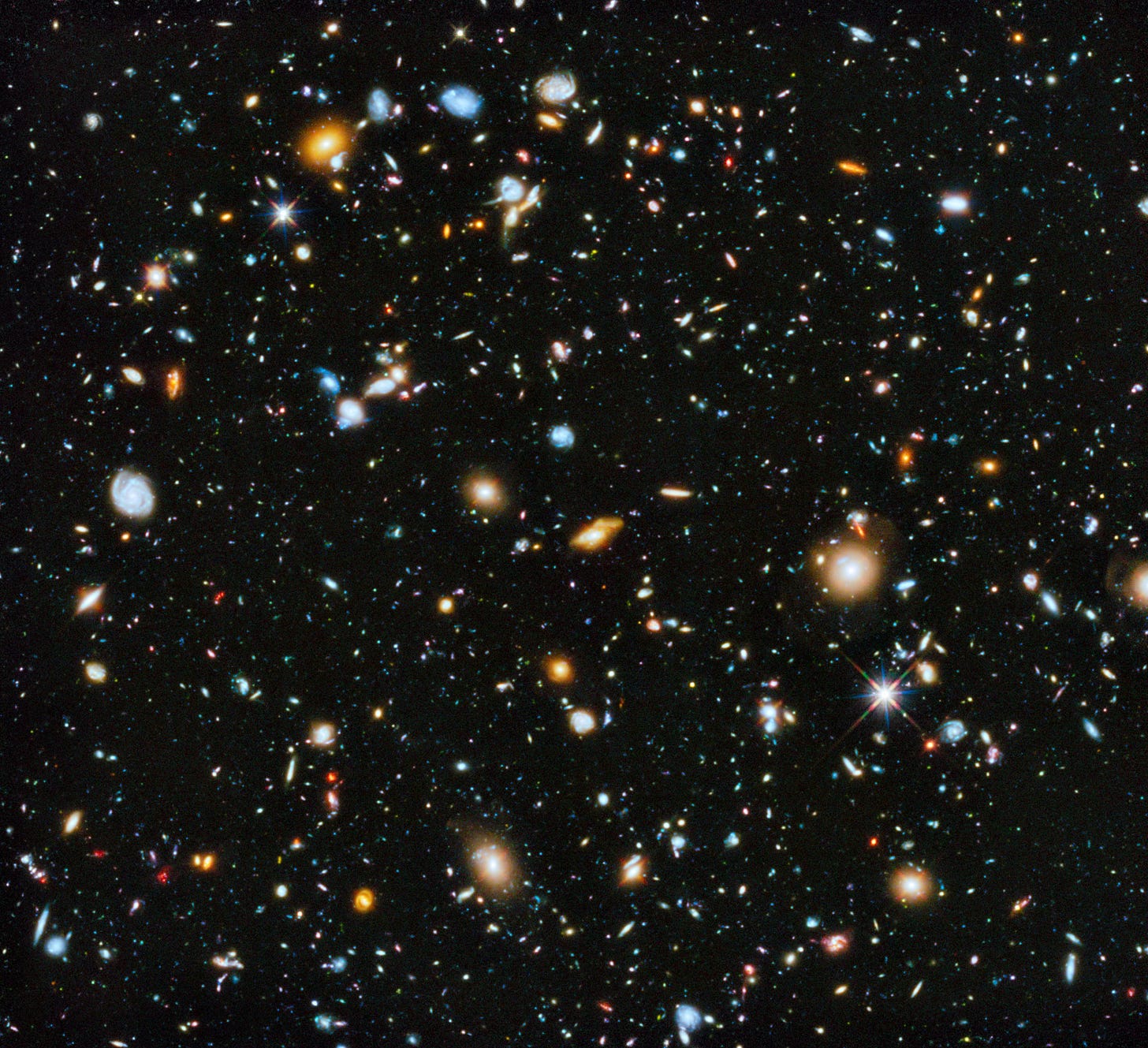You probably don’t know how small an atom is. I thought I did, but I did not. I want to show you.
One of the most convenient units of measurement in the world is called a mole. When you say “a mole",” it’s like saying “a year” or “a dozen.” We all know a year is 365 days if we stop to think about it — 366 days in a leap year — but usually, we don’t need to. I say I’m 53 years old, and no one ever asks — or needs to know — how many days that is. Likewise, you probably wouldn’t say, “Can you run to the store? I need 36 eggs.” You’d say “three dozen.”
A mole is 602,214,076,000,000,000,000,000, most often written as 6.022x10²³. If you’re unfamiliar with scientific notation, it means, “Science is hard enough. I’m not going to write this whole number. It’s essentially a six with twenty-three zeros behind it.”
Why would anyone want to use a number like that? Well, atomic masses are tiny, and no one uses the world’s smallest tweezers to put atoms together piece by piece. Overwhelmingly, we deal with grams and kilograms of things, so a few million atoms here or there hardly make a difference at that scale. At some point, scientists decided that one proton or one neutron weighs 1 atomic mass unit or 1 amu. Compared to those heavier particles, electrons hardly weigh anything. That makes it easy to say, okay, oxygen typically has eight protons and eight neutrons, so it has a mass of 16 amu. Hydrogen usually just has a single proton, so it weighs 1.
This is where the mole comes in and makes everyone’s lives easier. If you add up the atomic mass units of the substance you’re working with and multiply it by 602,214,076,000,000,000,000,000, you get the mass in grams. That’s a mole of stuff.
For example, water is H₂O. We just learned that hydrogen atoms have an atomic mass of about 1, and oxygen atoms have an atomic mass of about 16.
1 x 2 + 16 = 18
If you have 602,214,076,000,000,000,000,000 water molecules, you have about 18 grams of water. That’s an amount we can get our hands on.
The other thing you know is that just like a double cheeseburger has two patties, a mole of water has two moles of hydrogen. If you’re trying to make ammonia, which is NH₃, instead of starting with how many grams or what volume of each element you need, you know that each molecule will have a nitrogen atom and three hydrogen atoms. So, you’ll need a mole of nitrogen for every three moles of hydrogen. Having done only an introductory chemistry course, I can tell you, without even looking, that’s about 14 grams of nitrogen and 3 grams of hydrogen, or 22.4 liters of nitrogen and 67.2 liters of hydrogen at standard temperature and pressure.
Having a mole makes chemistry so much easier! Imagine having to tell people how old you are in seconds. You can figure it out if you need to, but you won’t put that on your Tinder profile. A year is a much more helpful way to talk about your age, and a mole is a much more helpful way to talk about enormous amounts of tiny things. And it works the other way! You can weigh some known element or compound, divide the mass by 6.022x10²³, and that’s how many atoms or molecules there are in it. Let’s take a breath and appreciate how amazing that is.
Okay. I promised I would show you how small an atom is, and we’re going to do that by imagining the size of that number. Our brains are not designed for huge numbers, but we’re creative, you and me, and I think we can do it. If you stay with me till the end, I think you’ll feel part of something extraordinary. Because we are.
A teaspoon is about 5 milliliters, and I put four teaspoons of water in this shot glass. Let’s call it 18 milliliters for the sake of argument. One of the great things about the metric system is that a milliliter of water at any reasonable temperature and pressure is about a gram. So here’s a mole of water.
Now imagine the Milky Way galaxy. There are about two hundred billion stars in our galaxy, and it seems that the Milky Way is an average galaxy in our universe. Keep that picture of the Milky Way in your mind with all those hundreds of billions of stars.
There are five times as many galaxies in the observable universe as stars in our galaxy. That means as far as we could ever see, out to the ends of the observable universe, there are about one trillion galaxies and, on average, two hundred billion stars in each one. That’s two hundred billion trillion stars in the observable universe — or 200,000,000,000,000,000,000,000 stars.
If you multiply that number by three or imagine three universes, you’ll have a mole of stars. That’s about the number of molecules in this shot glass of water. If a bartender poured you a shot like this, you’d complain, yet it contains three universes.
But we’re not done—one more thing.
If you multiplied THAT number by three — because H₂O — or imagine nine universes, you’d have the number of atoms in this parsimonious drink of water. It’s barely more than a sip.
That’s how small an atom is. Bottoms up.














Share this post